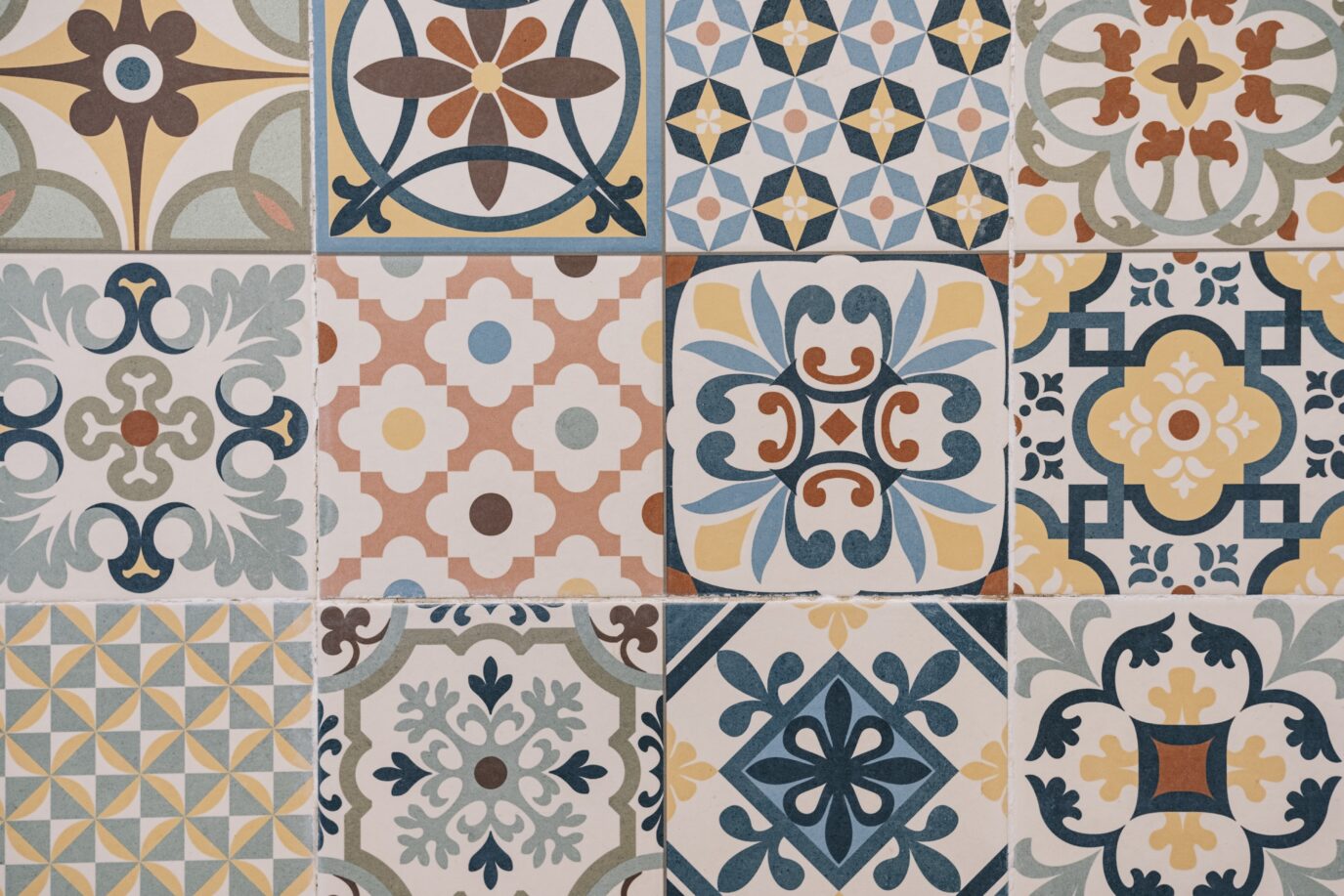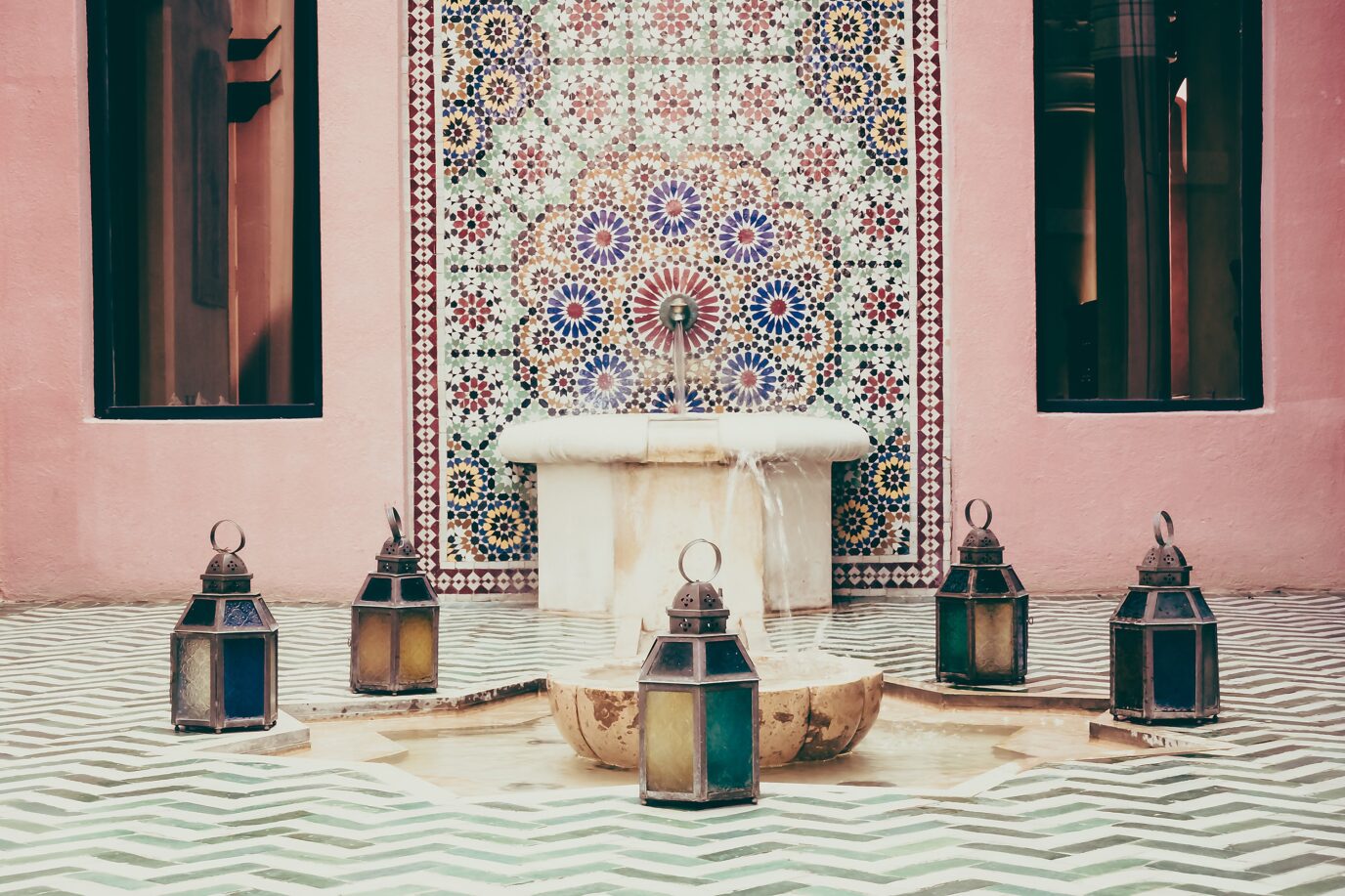Moroccan Zellige is one of the latest tiling trends; have you ever heard of it? Also known as ‘Moroccan tiles’ or Zellige, this tile has invaded all trendy interiors and decorations. With its various colors, these handcrafted tiles have a unique charm that makes our interiors warmer and more soothing.
If you plan to install the tiles of the moment in your home, there are a few points you should consider.
What is Moroccan Zellige?
Moroccan Zellige, or Moroccan tiles, are terracotta tiles born in Fez in Morocco. Zellige tiles can be reminiscent of subway-type tiles but are more often square than rectangular. In making Moroccan tiles the old-fashioned way, natural clay is mixed with water, shaped by hand, dried, and then baked. The artisans then apply an enamel only on the front face. Genuine Zellige should be made from clay free of lime and iron, which can damage tiles.
Worthy of the most splendid palaces of the Orient
The facades, the floors, the colonnades… all the palaces, mosques, or the most beautiful fountains of the Orient are covered with it. This simple clay tiling covered with handcrafted enamel has made it possible to create the most beautiful tiling compositions in Morocco and around the Mediterranean. First baked in the oven and then delicately cut into different patterns, Zellige allows infinite freedom of creation.
Tiles against uniformity
Tiles are all different, and that’s not necessarily a bad thing. If your Moroccan tile is uniform, then you know they are not authentic. This irregular and timeless appearance is the charm of Zellige, which is reminiscent of the principle of mosaic.
For matte lovers, beware: these tiles can be pretty shiny. In fact, these tiles are known for their shine and luster, which come from the way their translucent glaze comes in a lot of different, very different shades. But some Moroccan tiles have a matte finish and don’t shine.
With or without matt varnish?
“Glossy” finishes will be more luminous, resulting in a shimmery, watery result. A non-gloss finish is more matte. This is a personal preference, and the finish you choose will depend on the type of look you want for your project.
On the color side, you are served! The other great asset of Moroccan tile is its infinite color palette. Suppose each color has a historical meaning, in addition to the variations in brightness between each tile. In that case, the harmony of all the colors will make your layout unique.
Blue and green tones
Significantly influenced by the Mediterranean arts of antiquity, such as Byzantine, Arab, Persian or Roman art, the Moroccan tile fits perfectly into an oriental or Mediterranean-type decoration. The roughness of the materials and the bright colors of these Moroccan tiles give them all their charm. You can put them anywhere in your home!
Where is the Moroccan Zellige?
Moroccan tile is used to dress all types of walls: kitchen, bathroom, living room, bedroom, interior, and exterior. Its unique appearance really adapts to all environments and decorations. The Zellige can also be laid on the ground. Still, its non-uniform relief aspect can surprise the walker and sometimes retain water or dirt. However, this is not an obstacle because it is appreciated, just like the mosaic or the pebble floor, for the massaging sensations in an Italian shower, for example.
Moroccan tiles in several colors
Moroccan tile, whether a splashback or a simple floor or wall covering, adds a lot of color and energy to a room. A suitable epoxy joint keeps water out of the layout when the tiles are together edge to edge. This tile is ideal for wet places, like the bathroom, kitchen, or outdoors.
Frequently Asked Questions
What is a Moroccan tile called?
Traditional Moroccan tiles are known as zellige (also written as zellij or zellidj). Zellige is a terracotta tile hand-glazed in various colors to create intricate patterns and mosaics from geometric shapes. The tiles are frequently used to embellish walls, floors, and fountains. They are an integral part of the architectural heritage of Morocco. The term “zellige” is derived from the Arabic for “small polished stone,” The art of creating zellige tiles has been practiced in Morocco for centuries.
What is Arabic tile called?
Arabic tiles are called “Islamic tiles” or “Moorish tiles.” These tiles are a prevalent decorative tile in Islamic architecture, especially in the Middle East and North Africa. Similar to Moroccan zellige tiles, Arabic tiles frequently feature intricate geometric and calligraphic patterns. The tiles are typically made of ceramic and glazed in a variety of hues, creating a decorative effect that is joyful and colorful. Mosques, palaces, and other public structures are frequently embellished with Arabic tiles, which play a significant role in Islamic art and architecture.
What are the different types of Moroccan tiles?
There are different types of Moroccan tiles, each with its features and uses. Zellige tiles are made by hand and are glazed terracotta tiles famous for their detailed mosaics. Bejmat tiles, on the other hand, are rectangular clay tiles with a rustic look. A lime plaster called Tadelakt makes surfaces waterproof and is often used with Zellige. Patterns are made from cement and colors on encaustic tiles, which are also called cement tiles. The traditional patterns and bright colors of Fassi tiles, which are made in Fez, make them famous. Morocco has a lot of cultural history and skilled craftspeople, and these tiles show that.
What are some facts about Moroccan tiles?
Moroccan tiles have intricate geometric designs passed down from generation to generation of artisans. These designs have their roots in Islamic art and building. Because each tile is cut and finished by hand, it is one of a kind. Blues, greens, and yellows are standard colors that make designs stand out. Moroccan tiles are used to decorate, but they also waterproof walls and floors in homes, palaces, and churches. The most popular type, Zellige, is made in Fez and has a long history of producing tiles. Moroccan tiles are still popular because they look foreign, and more and more people are interested in making them more environmentally friendly using recycled materials and glazes.




